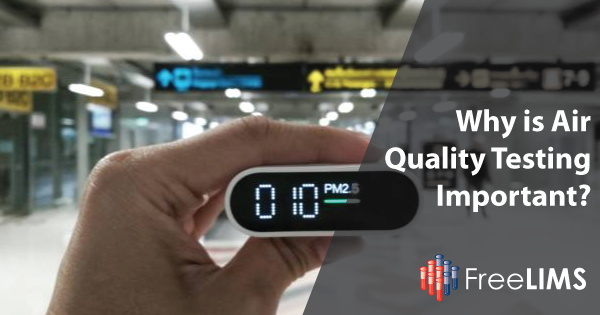“Clean air is a basic human right.” However, air pollution is becoming a public health concern worldwide.
According to estimates from the World Health Organization (WHO), close to 7 million people globally die each year due to complications that stem from outdoor and household air pollution, with more deaths occurring in developing countries. Millions more are ailing from conditions that are related to breathing polluted air. Children and the elderly are especially susceptible to harmful contaminants in the air. WHO recommends drastic measures to improve both indoor and outdoor air quality so as to prevent sickness and loss of lives through air pollution.
The only way to guarantee the safety of air is through rigorous air quality testing. The aim of testing air quality is to rule out the presence of chemicals that may be harmful to humans as well as animals.
What is air pollution?
Air pollution occurs when harmful chemicals are released into the atmosphere in amounts sufficient enough to cause infection and disease. They can be in the form of solid, liquid, or gaseous particles. Air pollutants come from different sources, including agricultural chemicals, industrial chimneys, combustion of household fuels, traffic exhausts, and disease causing organisms in the atmosphere among others.
What are the common air pollutants?
Common air pollutants include the following:
1. Radon
This is a radioactive gas that occurs in soil and easily finds its way into buildings through cracks in floors and walls. According to the Environmental Protection Agency (EPA), radon exposure causes 21,000 lung cancer deaths each year.
2. Secondhand smoke
This comes from involuntarily inhaling tobacco smoke, from being around environments with active smokers. It is especially harmful to young children and may cause ear infections and aggravate respiratory illnesses.
3. Combustion Pollutants
This occurs as a result of exposure to products of combustion from stoves, fireplaces, dryers, water heaters, and much more. It may aggravate respiratory illnesses.
4. Volatile organic compounds (VOCs)
VOCs are chemicals that come from products that we use in our homes, gardens, offices, and industries. They easily escape and contaminate the air we breathe. They include paints, varnishes, waxes, pesticides, and cleaning supplies among others.
5. Airborne Viruses and Pathogens
Some viruses and pathogens are airborne and hence can be easily transmitted from one person to another through air droplets. An example is the SARS-CoV-2 virus that causes COVID-19.
In 2003, the United States Department of Homeland Security established the BioWatch, a program that uses air surveillance to detect and monitor biological threats in the air and hence combat bioterrorism. The COVID-19 pandemic underscored the importance of such air surveillance systems.
What are the Benefits of Air Quality Testing?
Air quality testing involves collecting samples of air and analyzing them to determine the nature and levels of air contaminants present and how they aff ect human health and safety. It offers the following 5 benefits:
- It provides useful information on air quality and the impact of air contamination on public health.
- It supports compliance with WHO, OSHA, CPCB, and other relevant air quality standards.
- It provides useful information on types and levels of air contamination which can be used to direct public health policies.
- It provides feedback on the performance of air pollution controlled programs and highlights areas in need of improvement.
- It provides important information on short term and long term effects of air pollution as well as the related mortality rates.
Air quality testing is not mandatory. However, it is useful in safeguarding the health and wellbeing of all living and breathing organisms.
How Does an Environmental LIMS Support Air Quality Testing?
Air quality testing involves handling numerous samples and vast amounts of data. It also involves complex laboratory workflows that rely on automation to minimize human error and time inefficiencies.
A Laboratory Information Management System (LIMS) provides an IoT solution for the management of lab samples and data and integrates with all lab instruments and software, such as an ERP, for centralized data management. An environmental LIMS supports complex workflows, drives efficiency, and maximizes testing throughput.
FreeLIMS offers a cloud-hosted environmental LIMS solution that is designed to be compatible with different measurement methods used by air testing labs across countries. With a sophisticated software architecture, FreeLIMS is flexible and adaptable to the unique needs of air testing labs.
Air Quality Testing Safeguards Public Health
While access to clean air is a basic human right, millions of people around the world continue to suffer and even die due to conditions that are caused by air pollution. The COVID-19 pandemic, which killed close to 7 million people globally, underscored the importance of air quality surveillance. Air quality testing gives a clear picture of the state of ambient air and emission, and hence directs public health policies. An environmental LIMS supports laboratories that conduct air quality testing and mitigates operational challenges.


